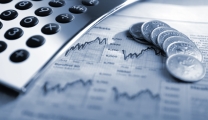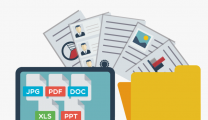What are fixed assets?
Fixed assets, also known as non-current assets, are long-term assets that a business holds and uses for the production of goods or services, rather than for sale to customers. Fixed assets are not intended for immediate sale, but rather for long-term use in the business.
Examples of fixed assets include property, plant, and equipment, such as buildings, machinery, vehicles, and furniture.

What are fixed assets?
Fixed assets are important to a company's financial statements as they represent a significant investment and can affect the company's profitability and financial position. They are reported on the balance sheet as a separate category and their value is often tracked separately from other assets.
What are current assets?
Current assets are assets that a company expects to convert into cash or use up within one year or within the normal operating cycle of the business, whichever is longer. These assets are held for the purpose of generating revenue or supporting the day-to-day operations of the business.
Examples of current assets include cash and cash equivalents, accounts receivable, inventory, and prepaid expenses.

What are current assets?
Current assets are important for a company's liquidity, as they are readily available for use in paying off short-term debts and obligations. They are reported on the balance sheet as a separate category, and their value is often tracked separately from other assets. A company's ability to efficiently manage and utilize its current assets is a key factor in its financial health and stability.
Difference between fixed asset vs current asset
Purpose
Fixed assets are used to produce goods or services for the business, while current assets are used to support the day-to-day operations of the business or generate revenue.
Purpose
Fixed assets are used to produce goods or services for the business, while current assets are used to support the day-to-day operations of the business or generate revenue.
Timeframe
Fixed assets are long-term assets that are expected to be used in the business for more than one year, while current assets are short-term assets that are expected to be used or converted into cash within one year.

Difference between fixed asset vs current asset: Timeframe
Liquidity
Fixed assets are less liquid than current assets, as they cannot be easily converted into cash without selling them, while current assets are more liquid and readily available for use in paying off short-term debts and obligations.
Valuation
Fixed assets are typically valued at their original cost less depreciation, while current assets are valued at their expected selling price or their cost of acquisition.
Reporting
Fixed assets are reported separately on the balance sheet as a long-term asset, while current assets are reported separately as a short-term asset.

Difference between fixed asset vs current asset: Reporting
Risk
Fixed assets carry a greater risk of obsolescence and technological change, while current assets carry a greater risk of fluctuating prices and demand.
Management
Fixed assets require long-term planning and management to ensure that they remain productive and efficient, while current assets require short-term management to ensure that they are effectively used to support business operations.
Current asset vs fixed asset on balance sheets
Record both your current and fixed assets on your business's balance sheet, and arrange them in order of liquidity, with the most liquid assets listed first. Cash is the most liquid asset and should be listed first since it does not require any conversion.
Current assets are usually listed higher on the balance sheet as they are more liquid, while fixed assets are listed further down since they are long-term investments that take longer to convert.

Current asset vs fixed asset on balance sheets
Typical current assets listed on your balance sheet may include cash, accounts receivable, inventory, and other liquid assets. Fixed assets are typically listed as property or equipment.
It's best to update your balance sheet regularly to get a current snapshot of your business's finances. Regularly updating your current and fixed assets in your books will help you create accurate balance sheets, evaluate your spending patterns, and efficiently plan budgets.












Replies to This Discussion